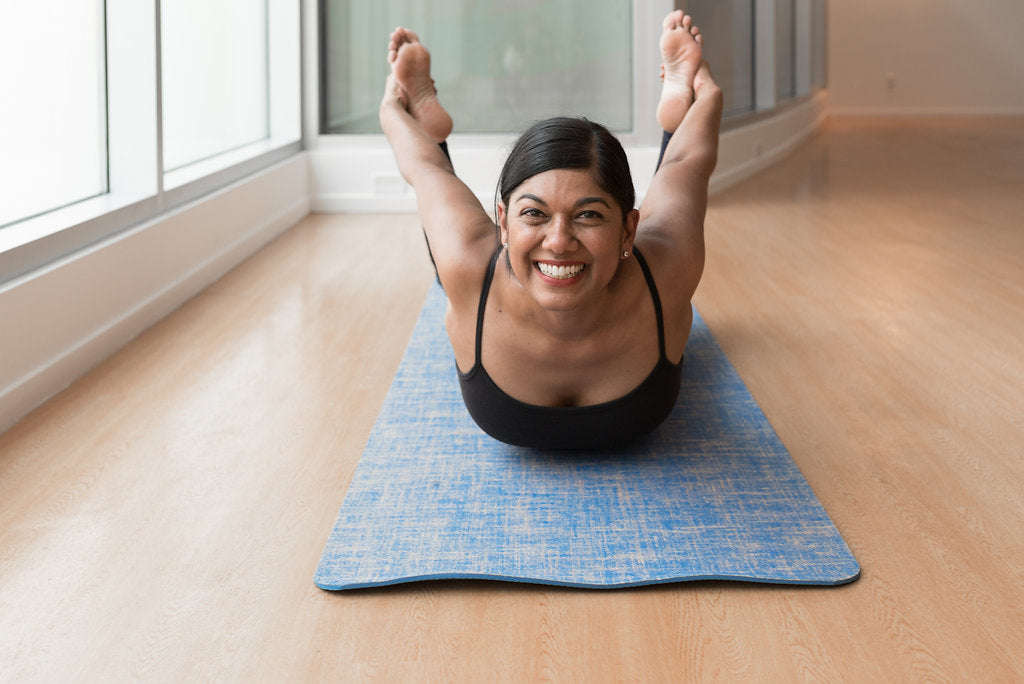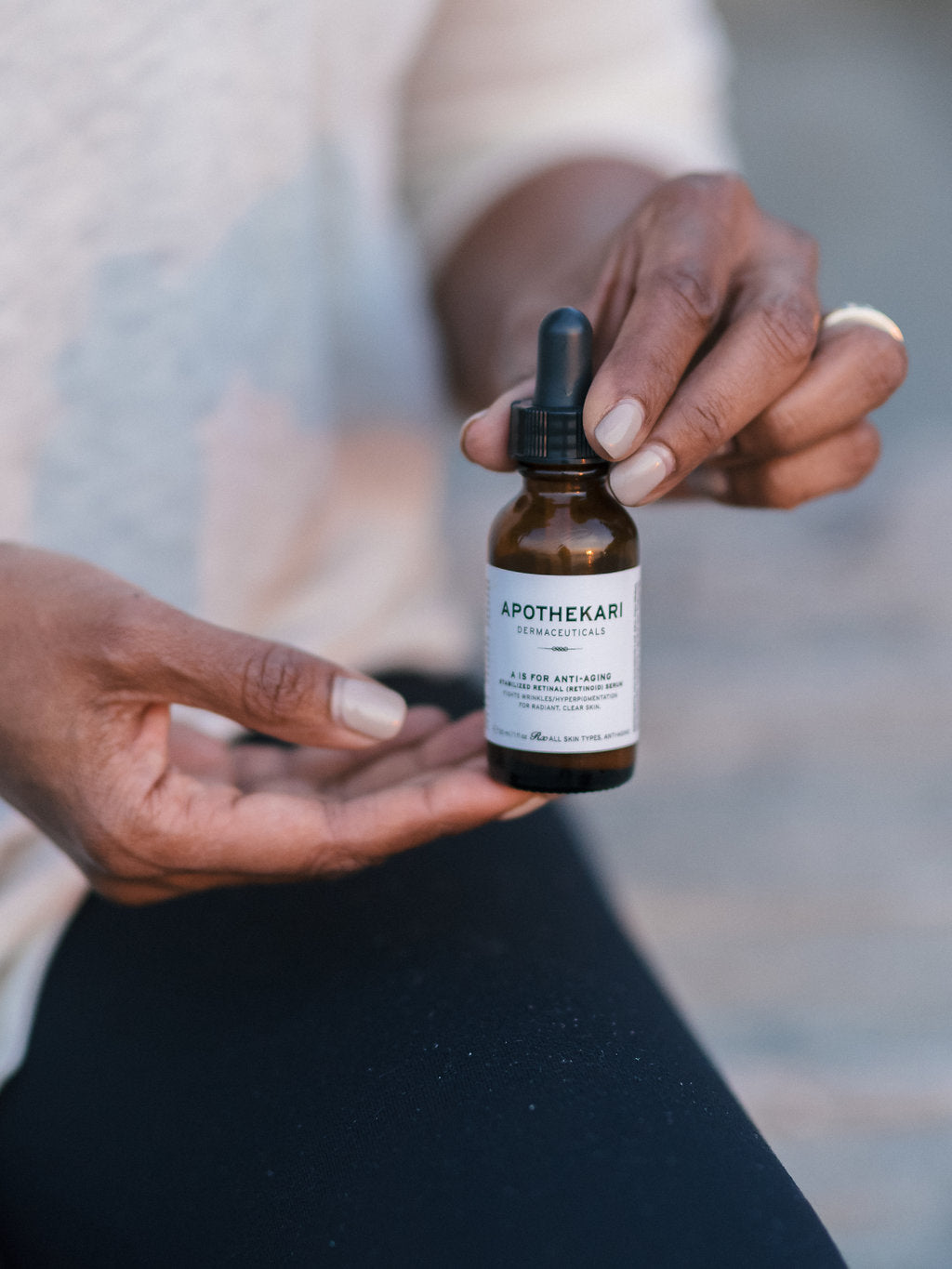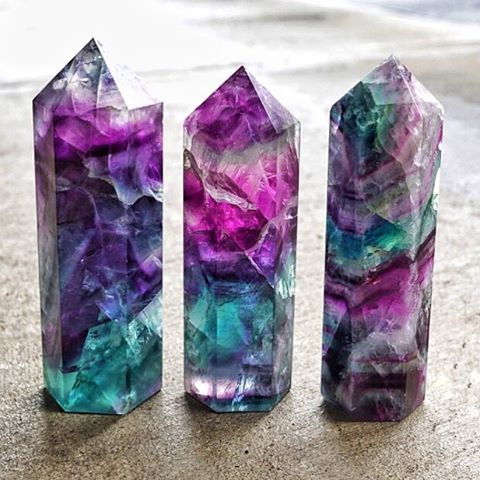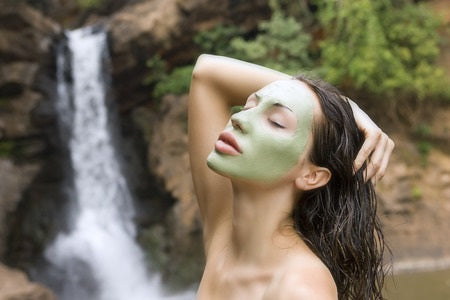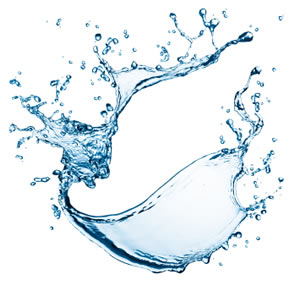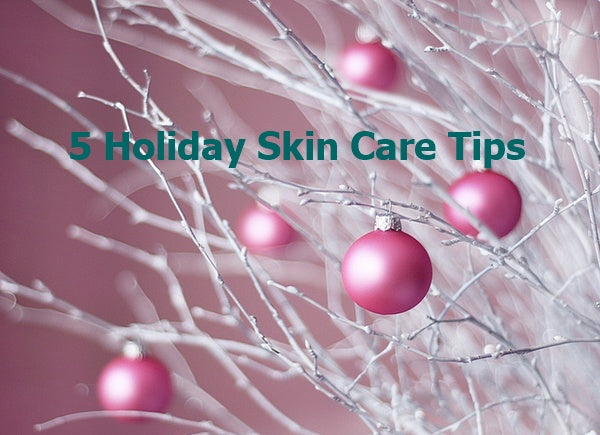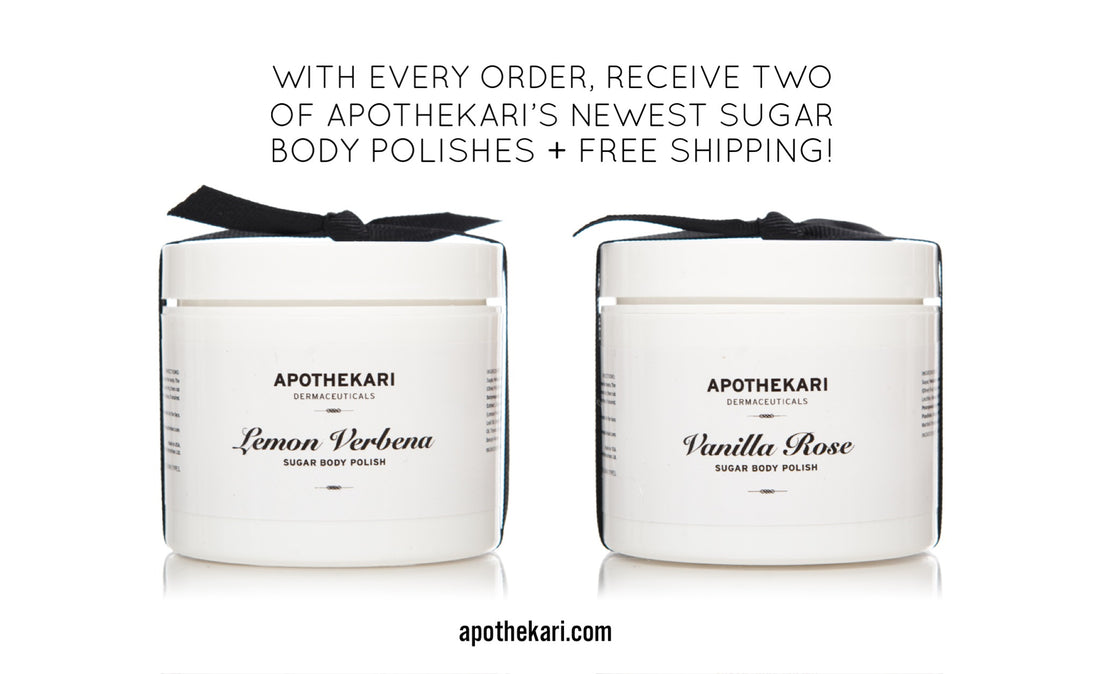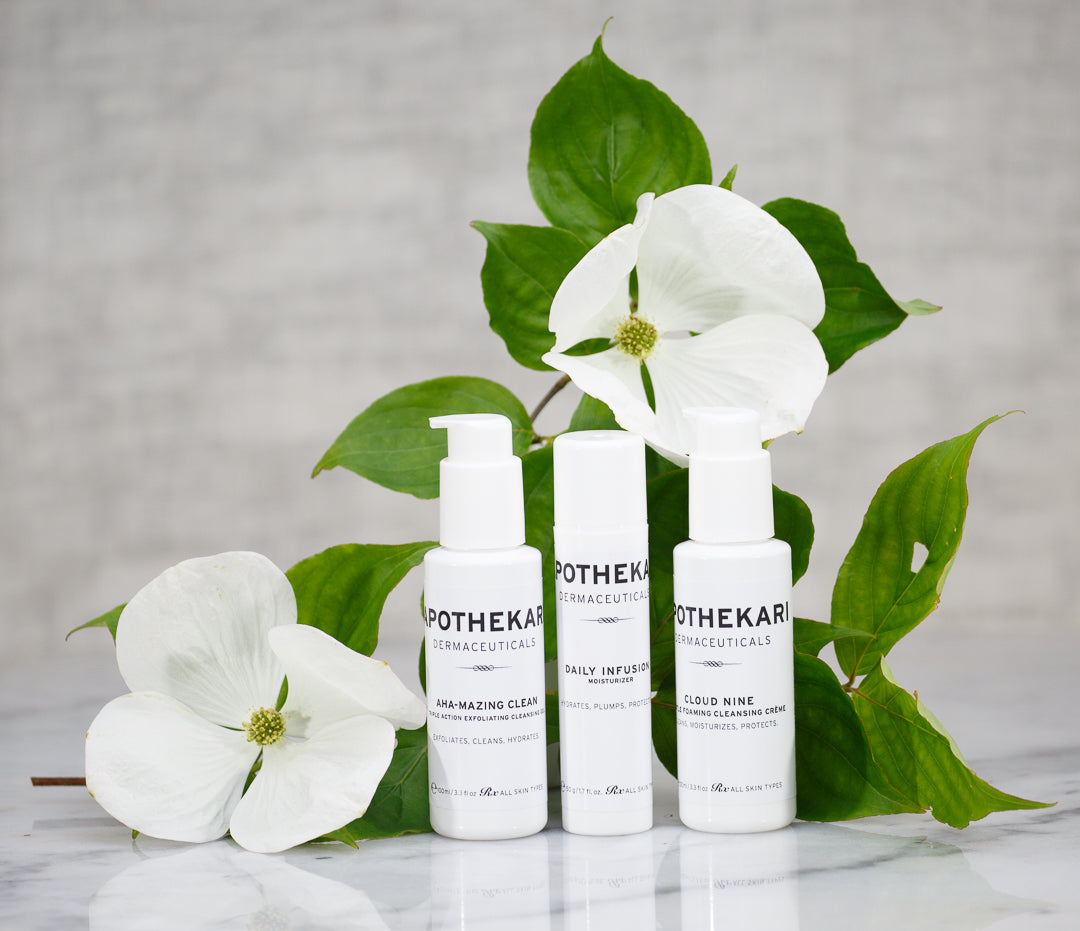Blog
5 Winter Sunscreen Tips
In this post I’ll share my top 5 winter sunscreen tips to help you keep your skin protected from the sun’s ultraviolet (UV) rays, which can damage skin year round, in both summer and winter. Shop Bespoke Vitamin C 15% Do I Need to Apply Sunscreen in Winter? The deep of January may seem an odd time to deliver winter sunscreen tips. However, you need to apply sunscreen regardless of the time of year. Two types of the sun’s UV rays can damage skin: UVA Rays. These deep penetrating rays are prevalent year round. They pass through glass and clouds and are associated with Aging and some types of skin cancers. UVB Rays. These shorter penetrating rays are the ones mainly associated with Burning. Like UVA rays, they may contribute to some types of skin cancer as well. While I’m all for sitting inside drinking warm cups of tea and reading books or bingeing on Netflix through the cooler months, being a shut-in probably isn’t wise. Someone has to buy groceries after all. And, fresh air is good for the soul! If I’m working, I’m usually close to the window so my skin is receiving daily UV exposure, even in the dead of winter. Which Sunscreen is Best for Winter? Here’s how to choose a sunscreen in the winter (or summer)—here are my 5 top winter sunscreen tips: Aim for a Minimum of SPF 30. An SPF 30 sunscreen blocks about 97% of UVB rays when applied correctly. Most health professionals will recommending SPF 30 as the minimum when it comes to sunscreen. Go for Broad Spectrum. Though most sunscreens should offer you protection against both UVA and UVB rays, some don’t. Look for those labelled as ‘broad spectrum’, which means that they will protect against both types of rays. Apply Enough. Studies have shown that most of us never apply enough sunscreen, meaning that we aren’t getting the protection indicated on the label. How much is enough? For the most part, you’ll need about ¼ teaspoon for your face (not including your neck, ears or head). I like to apply once, wait a bit and then apply again. This helps to make sure I cover any missed areas the second time around. If your decollete will be exposed, don’t forget that area. And try to get the tops of your hands too. Apply First Thing in the Morning. Doing this achieves two things. First, it helps to get you into the habit of wearing sunscreen every day, year round. Second, it ensures that you are protected even it you stay indoors. Remember that you don’t have to go outside for exposure to UV rays as UVA rays can penetrate through windows. Find a Sunscreen You Like. Experiment a bit. Find a sunscreen whose texture, fragrance and skin feel you like. If you’re happy with your sunscreen, you’ll be more likely to use it. Lastly, if you want to up the ante on protecting your skin against UV damage, consider adding in an antioxidant. Antioxidants protect skin differently than sunscreen can, by helping to minimize skin damage caused by exposure to free radicals. Free radicals are unstable molecules, which are generated by UV rays, pollution and other external factors. We like our Bespoke Vitamin C Serum, which boasts L-ascorbic acid, green tea extract and an arsenal of antioxidants to deliver the ultimate in skin protection. What’s your take? Any further winter sunscreen tips to offer?
Learn moreExercise Skin. Yup, They're Related
Exercise Skin. You may not think these two things are related, but new research shows that exercise benefits not only our overall wellness but that of our skin as well. In fact, in addition to help skin look younger, it may also even reverse skin aging in people who start exercising late in life. Aging leads to many unwanted changes in our skin. Wrinkles, crow’s feet and sagging make us look older due to changes occurring within the various layers of our skin. After about the age of 40, our stratum corneum, the outermost, protective layer of skin that we can see and feel, starts to thicken. Composed mainly of dead skin cells and a little bit of collagen, it gets drier and flakier. At the same time, the dermis, located underneath the stratum corneum and epidermis, starts to lose skin cells and elasticity and begins to thin. The result is more translucent skin and often, a more saggy appearance. The changes above occur as a result of the aging process and don’t take into account general lifestyle particulars such as diet, sleep, stress or sun exposure. Are skin changes inevitable as we age? Recently, researchers investigated just this. A team at McMaster University in Ontario found that premature aging in nearly every organ in the body was completely prevented in mice that ran on a treadmill three times a week for five months. These mice were genetically engineered to age faster due to a defect in their mitochondria — the cellular powerhouses responsible for generating energy for nearly every cell in the body. Mitochondria are unique in that they have their own DNA. It has been thought that lifelong accumulation of mitochondrial DNA mutations lead to energy crisis that result in a progressive decline in tissue and organ function, ultimately resulting in aging. But the study on genetically-disadvantaged mice found those who had endurance exercise training three times a week looked as young as healthy mice while their sedentary siblings were balding, graying, physically inactive, socially isolated and less fertile. One of the lead authors of the study, Adeel Safdar, said: “I believe that we have very compelling evidence that clearly show that endurance exercise is a lifestyle approach that improves whole body mitochondrial function which is critical for reducing morbidity and mortality. Exercise truly is the fountain of youth.” Co-author Jacqueline Bourgeois said: “The recipe for healthy aging is very simple, and that’s exercise. The problem is that it is most people find it a difficult recipe to follow.” The study was taken a step further looking at people aged 65 and older. Exercise skin changes at a microscopic level were observed when exercise was introduced to participants for 30 minutes three times a week on a stationary bike – not much. To eliminate changes attributed due to UV exposure, skin that had not been frequently exposed to the sun was examined. The results? Skin appeared 20 to 30 years younger under the microscope after three months. The correlation between exercise skin is not completely clear, but researchers suspect that certain substances are also involved in the skin changes related to exercise. There’s no evidence that exercise reverses wrinkling and other damage from the sun, but it’s incredible to consider all of the ways in which exercise changes our bodies, including that of our skin. So…Get moving! Your health AND your skin will thank you.
Learn moreRetinol. 5 Myths Busted
Retinol and its relatives retinaldehyde, retinyl palmitate and prescription forms including retinoic acid, tazarotene and adapalene, is one of the most effective skin care ingredients to include in your skin care arsenal. Yet, despite the popularity of this effective class of ingredients, there are many misconceptions regarding its use. In this post we’ll look at 5 of the most common ones in an effort to set things straight. What is Retinol? Retinol and other derivatives all come from Vitamin A. It and its related compounds have been around for decades and many studies have shown consistently positive results on skin, including: Improving the skin’s texture Minimizing fine lines and wrinkles Delivering an even skin tone Reducing skin oiliness Managing blemishes Retinoids accomplish this by boosting collagen synthesis and increasing skin cell turnover (helping to speed up the development of new skin cells as we age). You’ll notice an ‘exfoliating’ effect, unclogged pores and less dry, flaky skin upon regular use of retinoids. Retinaldehyde, found in our A is for Anti-Aging Serum, also has anti-bacterial activity, making it a valuable addition in the management of acne. Below, I am setting the record straight on 5 commonly held myths regarding retinol: 5 Retinol Myths 1. Retinol (retinoids) Exfoliates The peeling and redness that accompanies some retinoids is the result of skin irritation and not true ‘exfoliation’. It is also the result of increased skin cell turnover. Despite the painful period of dealing with the peeling, this action is what helps make skin look so good. Build use gradually or try a milder or less sensitizing form of retinoid, like retinaldehyde to minimize this reaction. 2. Don’t Apply Retinoids Around Your Eye This recommendation comes from the belief that under eye skin is extremely sensitive. While it is indeed sensitive, studies have shown that people who apply retinoids right up to the eyes get the best results. As with all new skin treatments, do a patch test first, start slowly and back off if skin becomes very red and irritated. 3. Stop Applying Retinol if Your Skin Gets Irritated Initial skin irritation is part of the process and skin tends to adapt after a few weeks so unfortunately, you may have to put up with it. We’re talking here, about light peeling, increased dryness and some redness. With skin that experiences significant discomfort, discontinue use. Retinaldehyde is the least irritating form of retinoid, yet still delivers results. 4. Use the Strongest Retinoid You Can Find You don’t need to use the most potent retinoid (prescription forms like retinoic acid) to obtain benefits such as increased collagen production and skin cell turnover. While you may get faster results, it’s also true that you may also experience more irritation. This is something I have personal experience with. About to give up with retinoids due to irritation, peeling and redness from various prescription forms, along with non-prescription retinol, I found that my skin tolerated and liked, retinaldehyde very much. In fact, most customers tolerate A is for Anti-Aging very well, with minimal skin irritation. 5. You Should Stop Using Retinol in the Summer While retinol is light sensitive (it breaks down upon exposure to sunlight), there is no reason to stop using it in the summer. You can use retinol year round but always apply at night to ensure that it doesn’t degrade. Diligently apply an effective broad spectrum sunscreen during the day (SPF 30, at least) and you won’t have anything to worry about. Caveats There are a few: Don’t use retinoids if you are pregnant or breast-feeding. Although probably safe, there have been links to birth defects with the use of Vitamin A. Don’t layer retinoids with benzoyl peroxide and alpha hydroxy acids, which may deactivate them. Use caution during waxing, as skin may experience excessive redness with retinoid usage. Don’t use a retinoid for several days before a treatment. A very small amount of individuals have ultrasensitive skin and can never tolerate a retinoid. If you’re one of these people, try using a gentle exfoliation treatment once or twice a week and be extra careful to use sunscreen regularly. Retinoids. What do you say?
Learn more2018 Skin Care Trends - 5 I'm Looking At
One can’t escape the inevitable ‘lists’ that accompany the start of a new year and the 2018 skin care trends list is one I can’t help but check out. There isn’t just one of course, as every blogger, magazine and article has their own take on which trends will become popular this year. Here are 5 that stand out for me. Shop Bespoke Vitamin C 15% 1. Bespoke Skin Care At Apothekari, we’re already doing it! We launched our Bespoke Vitamin C Serums (aka made-to-order/customized) a few years ago because we understand that some products need to be made to order. Formulated with high concentrations of L-ascorbic acid (aka Vitamin C), our serum also contains green tea extract (potent antioxidant), ferulic acid, Vitamin E and a range of other moisturizing and free radical fighting ingredients. Our made-to-order process ensures that each bottle of Vitamin C serum contains potent, active and unoxidized Vitamin C to ensure that it’s the freshest product available anywhere. Out of all the 2018 skin care trends, we heart this one. 2. Body Care Takes Off It’s not surprising that most of us pay attention to our faces, but ignore our bodies when it comes to skin care. While you may have already noticed décolleté creams and body oils on shelves, this year, watch out for higher tech serums and creams containing ingredients normally reserved for the face. Even masks, normally reserved for facial care, are making a foray into body care with products specific to the chest, arms and breasts. 3. Free From While plenty of “all-natural”, “green”, “clean” and “eco” lines are on the market these days, consumer demand is fueling a rise in offerings including “gluten free”, “cruelty free” and “vegan” options as well. It’s easy to get caught up in a claim and assume a product is superior because it is natural, gluten free, cruelty free and/or vegan and companies may be taking advantage of this demand by offering products that may not be what they seem. Unfortunately because many of these term are not regulated, you may not be getting what you paid for. We encourage you to read the ingredient deck and not be afraid to call or write and ask if you need clarification. A good company will stand by its products and not be afraid to give you the information you need to make an informed purchase. 4. Gem Infused Skin Care Also big in 2017, this 2018 skin care trend may seem a bit woo woo, if New Age isn’t your thing. Fueled by celebrities, gems, including amethyst (claimed to be good for inflammation), malachite and tourmaline (detoxification and energizing) are a few to look out for. All things lunar and solar powered are also having a moment. Keep in mind that there is little, if any, scientific evidence to substantiate crystals’ efficacy when it comes to skin care. But it is kind of fun, isn’t it?! 5. Brands Supporting Causes A wonderful trend as more people are expected to support brands that “do good”. Brands are recognizing that consumers want to make charitable purchases and are donating a portion of sales to charitable organizations. Do any of the 2018 skin care trends stand out for you?
Learn more2017 Skin Care Trends: 5 Top Ones
As this year draws to a close, it’s a good time to visit a few of the 2017 skin care trends. Many of the trends originate with indie beauty companies (like Apothekari) and while some may seem a bit out there to begin with, many gain traction and become mainstream after some time. Here are five that stood out this year: Shop All Apothekari Top Skin Care Trends 1. Masking Google reported that wearing a face mask was the biggest skin care trend of 2017. Whether a sheet mask or a peel off mask, you’ll likely have seen many an Instagram blogger posting selfies of treatments incorporating ingredients like charcoal and turmeric. 2. Cleaner, Greener Options People are taking more note of what goes on their skin and 2017 saw a continued rise in the search for green options, including those of the vegan variety. According to Google, searches for vegan skin-care products have risen by a whopping 83 percent within the last year in the U.S. 3. Ayurvedic Beauty is Becoming Mainstream While the K-beauty trend is not going away anytime soon, we started to see brands and treatments incorporating Middle Eastern and South Asia wisdom with ingredients like turmeric. Beauty chocolates incorporating spices like cardamom and rose and inspired by Ayurveda also hit the aisles. 4. Crystal, Celestial, and Otherworldly Skin Care The New York Times dubbed 2017 as “The Great Crystal Boom”, a trend that focuses all things lunar cycle, solar powered, and crystal-loving being infused into skin care products. 5. Men Are Taking Note of Skin Care More men are becoming interested in their skin and companies are responding by offering more unisex products that appeal to both sexes. As well, there has been a growth in brands catering just to men. Which 2017 skin care trends appealed to you this year?
Learn moreWater in Cosmetics – Yay or Nay?
When it comes to water in cosmetics, you’ll find this ingredient listed in every type of personal care product – lotions, cleansers, deodorants, make-up, shampoos, sunscreens, etc. Do an internet search for the use of this common skin care ingredient and you’ll find differing opinions regarding its usefulness in formulations. In this post, I’ll cover the rationale behind incorporating water in cosmetics and let you decide if it makes sense or not. Water in Cosmetics – Why? Many individuals and companies will dispute the use of water in personal care products for many reasons with the main argument being that it is a cheap filler in treatments. Yet from a formulation and benefits perspective, water is important when it comes to cosmetics for several reasons: It helps to dissolve many ingredients that are beneficial to skin. Without water, you’d have to make do without many skin beneficial ingredients or be happy with a gritty, unpleasant texture. Water aids in the formation of emulsions – preparations in which oil and water are combined together to form creams and lotions. Depending on the ratio of oil to water, these may be called oil-in-water or water-in-oil emulsions. Emulsions produce lighter feeling and less greasy textured formulations than those that contain oil alone. More water equals a lighter textured product and less results in a more heavily textured one. It helps to replenish moisture in the skin. What Type of Water Is Used in Cosmetics? The type of water in cosmetics isn’t every day, regular tap water. It has to be free of microbes, metals and particulates that not only potentially can contaminate the end product but also wreck its stability. For this reason, formulations should contain distilled or deionized water which is free from contamination. What About the Consumption of Water for Maintaining Healthy Skin? You’ll come across many recommendations advocating that the consumption of adequate water – often eight to 10 glasses per day – is the secret to radiant skin. In fact, beauty magazines and beauty bloggers never tire of this as a way to improve your skin’s appearance and even eliminate wrinkles. While nobody would dispute that adequate water intake is important for your health, there is little, if any, scientific evidence that proves drinking a lot of water has any skin benefits at all. In fact, the water you consume will reach all your organs before it gets to your skin. Our skin, via its outermost layer, the stratum corneum, is designed to prevent water loss. Yet guzzling water isn’t necessarily going to make its way to your skin. The application of topical treatments with ingredients that include occlusives (prevent water from evaporating from the skin into the environment) and humectants (draw water into the superficial layers of skin) is your better bet for efficacy. Apply a hydrating moisturizer immediately after washing, bathing or showering to help lock in the moisture. As for the consumption – go ahead. Drinking water will do your body good; just don’t expect it to transform your skin. The next time you pick up a container and read the ingredients to see water at the top, you’ll know why this skin beneficial ingredient is included. Water is included in several of our Apothekari formulations including Daily Infusion Moisturizer, our Bespoke Vitamin C Serums and A is for Anti-Aging. They are not there just for show! Shop All Apothekari
Learn more5 Holiday Skin Care Tips
Here we are, almost at mid-December and for most of us, the festive season is in full swing. While we may love the lights, the gatherings and the abundance of good food, they can all come with a price. We’re probably eating too much (and maybe not that well), imbibing in alcohol more frequently and also not getting enough sleep. Shop All Apothekari Your skin may be showing its displeasure with your lack of care and indulgences but thankfully, there are ways to disguise what we’ve been up to. Here are 5 holiday skin care tips to help you and your skin survive: 1. Keep Clean Yes, I know. After a late night out, possibly wearing gorgeous but deathly uncomfortable heels, all you want to do is fall into bed. Yet, if you don’t take the time to remove your makeup and wash your face, problems will arise. A dirty face, especially combined with too much alcohol, poor food choices and not enough sleep will lead to breakouts and blemishes. And this is just the time of year when you don’t need them. 2. Sleep While there tend to be many late nights during the holiday season, strive for early nights when you aren’t going out. This one little thing will impact not only how your skin looks but also your overall wellness. 3. Add Some Shimmer Now may be a good time to seek out a good highlighter or shimmer powder. There are many options to choose from and a shimmer powder will add some sparkle to your face. Often infused with light-reflecting particles, you’ll be left with a luminous, radiant look that hides what you did last night! 4. Put On a Concealer If you’ve been out too much or up too late, an under eye concealer can help to hide the dark circles that accumulate from lack of sleep. This little trick can brighten up and awaken the eye area, making it seem that you had enough shut eye. 5. Try Going Make-up Free Hard when you’re a social butterfly, but on days at home, give your skin a break to give it a chance to breathe and recover. This busy and hectic time is also one of my favourite times of the year. While it’s easy to get caught up in the hustle and bustle, it’s important also to take care of yourself and I hope that these 5 holiday skin care tips are useful. Slow down, take a deep breath and enjoy. It’ll get you to the New Year looking bright and beautiful and ready to take on the world!
Learn moreApothekari Gift Guide 2017
Holiday Gift Guide 2017 We’re into the first week of December already and if you’re anything like me, you may be a bit behind on your gift shopping. To make things easier, we’ve put together a list of gifts that may help relieve some of the stress. While we can’t guarantee that your purchase will arrive in time for Christmas, you can choose to pick up locally in Vancouver at Pure Pharmacy on Oak Street (option and details available at checkout) if that makes sense for you. Come Say Hello at The Bar Method Pop-Up! If you’d like to check out a bar class, shop from Apothekari (we’ll have testers on hand too) and support the Vancouver Food Bank through the Bar’s annual holiday Bar-a-thon food and toy drive, visit us during the Bar’s pop-ups: December 9th: 8:00 am – 12:30 pm West Vancouver, Marine Drive, Suite 250, West Vancouver, BC V7V 1J4 (604) 925-6199 December 16th 8:00 am – 1:30 pm Yaletwon. 837 Beatty Street, Suite 201, Vancouver, BC Phone: (604) 681-6188 We look forward to seeing you! Visit The Bar Method for more information. Now on to that Gift Guide… 1. For Someone Who Loves Bath-time Our range of sumptuous bath products are designed to exfoliate, moisturize and cleanse skin. Consider the following: Lemon Verbena Sugar Body Polish. A new addition to our online store, this sugar polish has a bright, aromatic citrus scent and is ideal for aromatherapeutic body treatments or a little pampering in your bath. Unlike most sugar-based scrubs, our body polish is smooth and never drips excess oil, so it’s easy to apply. Made with a blend of natural butters, this body exfoliator leaves the skin feeling soft and well-moisturized yet not greasy. Vanilla Rose Sugar Body Polish. New, like the Lemon Verbena Sugar Body Polish, Vanilla Rose boasts a modern and subtle scent of rose along with a faint hint of vanilla. It too, is ideal for aromatherapeutic body treatments or a little pampering in your bath. Unlike most sugar-based scrubs, our body polish is smooth and never drips excess oil, so it’s easy to apply. Made with a blend of natural butters, this body exfoliator leaves the skin feeling soft and well-moisturized yet not greasy. Our Shea Body Butter is made with organic shea butter and infused with healing herbs, fresh oils, natural vegetarian waxes and an intoxicating blend of essential oils to heal dry, cracked and callused skin. This extra-rich, protective crème is made with the highest quality organic shea butter from Africa. It penetrates deeply to heal dry, cracked, and callused skin and is also excellent as a daily hand crème, aiding in the health of cuticles and nails. Bamboo Lemongrass Foaming Body Polish. Let our Bamboo Lemongrass Foaming Body Polish revitalize and invigorate your skin and your senses with walnut shell powder, powdered bamboo and a light, refreshing essential oil blend of lemongrass, mimosa, and litsea! This exfoliating polish also comes with some light foaming action, leaving your skin feeling soft and smooth and you feeling refreshed! Our body treatments are packaged in gift sets for extra savings! 2. For Someone Serious About Skin Care Consider the gift of great skin for someone who is concerned about keeping it as healthy and youthful as possible. Apothekari A is for Anti-Aging, our top selling serum is everyone’s favorite because it’s formulated with retinaldehyde – a super gentle yet highly effective form of retinoid PLUS niacinamide – soothing, anti-inflammatory and hyperpigmentation busting. This treatment receives rave reviews from our customers and is a must have for anyone who wants skin that glows. Bespoke Vitamin C Serums. Available in both a 10% (for newbies or those with sensitive skin) or 15% concentrations, our hydrating serum contains Vitamin C as L-ascorbic acid plus a host of skin beneficial antioxidants to deliver protection from free radicals that can cause skin damage. Apply every morning for brighter skin. AHA-Mazing Clean Exfoliating Cleansing Gel is ideal for everyday use for all skin types (except sensitive). It will help to improve skin’s overall appearance, with all three major ingredients working together to smooth fine lines and wrinkles, gently exfoliate clogged pores, and promote cellular renewal. Cloud Nine Foaming Cleansing Creme is a new generation of gentle, foaming cleanser, that not only cleans, but also moisturizes and protects skin. Rich with antioxidant and anti-inflammatory ingredients, soothes aging and sensitive skin, while delivering a healthy glow to all skin types. Apothekari Antioxidant Firming Eye Gel is formulated with Vitamin C, ferulic acid, sodium hyaluronate and algae extract to prevent signs of aging while correcting existing photodamage. Used daily, this preventive and corrective treatment combats signs of fatigue, improves discoloration and skin tone to restore a fresh, vibrant appearance around the eyes. 3. For Someone Hard To Shop For Can’t decide or not sure? We offer Gift Certificates starting at $25. Let them decide what to get and be rewarded for choosing a thoughtful and usable gift!
Learn moreSynthetic vs Natural Ingredients in Skin Care : 5 Things You Should Know
With a growing awareness and interest in healthy living (open to interpretation, yes!), it’s not surprising that many of you may be concerned by the use of synthetic ingredients in your cosmetics. I’m often asked if Apothekari is ‘natural’ and while we could certainly describe ourselves as a natural skin care line, it feels a bit insincere to say that because when it comes to skin care, the word natural is unregulated and very much open to interpretation. We like to focus instead on the fact that we formulate with safe and effective ingredients and that we include them at appropriate concentrations to deliver the best possible outcomes for your skin. There is a lot of fear mongering on the internet, often perpetuated by well-meaning but unqualified individuals who would like us to believe that if any ingredient is synthetic – produced in a lab – that it must be bad. And that if an ingredient is natural – coming from nature – then it must be good. The truth is that there are good and bad skin care ingredients in both the natural and synthetic camps and you shouldn’t be led into believing that one is better than the other. Here are 5 common misconceptions about synthetic ingredients and natural ingredients that you may come across: Synthetic Ingredients & Chemicals Are Bad. The truth is that everything is a chemical. WE are made up of chemicals. Something that is synthetic or a chemical isn’t necessarily bad for you or your skin. However, some ingredients, whether synthetic or natural are best avoided or used in minimal quantities. No direct relationship between the benefits and dangers of a particular chemical and its origin as a natural or man-made substance have been found. Natural Ingredients are Better for Your Skin. Whether a chemical is synthesized in a lab or obtained from nature, our bodies cannot distinguish between the two. Identical ingredients are treated and processed by our bodies in the same manner. Natural Ingredients are Better for the Planet. Not necessarily. Some plants are endangered and by continuing to harvest them, we may be putting a strain on them and their habitat. Consider the palm tree and palm oil. While it is possible to harvest palm sustainably, we don’t always know that it was. If You Can’t Pronounce an Ingredient it Must be Bad. Just as synthetically produced ingredients may have long and unpronounceable names, the same is true of natural ones. Consider this list of ingredients – a-pinene, limonene, 1,8-cineole, cis-ocimene, trans-ocimene, 3-octanone, camphor, linalool, linalyl acetate, caryophyllene, terpinen-4-ol and lavendulyl acetate. Would you be surprised to learn that they are all constituents of lavender, an ingredient used widely in many ‘natural’ skin care lines? Even Natural Products Must Have Preservatives. Manufacturers of natural products often proudly claim to be preservative free. While this may be OK for certain formulations (those that don’t contain water), it is not safe for products formulated with water or botanical ingredients. Natural and preservative free is not always a good thing and it can be downright dangerous
Learn moreOur Black Friday 2017 Promotion - Now On!
Until November 29th, every order placed online at apothekari.com qualifies for FREE SHIPPING + A GIFT of a 15 g jar of each of our new Sugar Body Polishes – Lemon Verbena and Vanilla Rose! Unlike most sugar scrubs, our sugar body polishes are smooth and never drip excess oil, so they are easy to apply. Made with a base of shea and olive fruit butters combined with virgin coconut oil, they will leave the skin feeling soft and well-moisturized yet not greasy. Apothekari Dermaceutical body products make excellent gifts for the holidays & are a special way to pamper yourself. We offer them in sets with special pricing. View the full selection of body care products here. *Offer is valid in Canada and the USA only. Use code BFRIDAY at checkout. Until November 29th, 2017.
Learn moreApothekari Ingredients Dictionary
The Apothekari Ingredients Dictionary is now live on our website! We’ve been working hard to provide a list and definition of all the ingredients used in our scientific skin care line and hope that you’ll find this feature useful when doing research into selecting the best products for your skin care needs. We know that you have preferences when it comes to choosing treatments and we hope that this list of ingredients will make it easier to include products that benefit your skin and avoid those that may be problematic. At Apothekari, we aim to be transparent about all aspects of our brand and our cosmetics ingredient dictionary is one way of doing that. We include a range of ingredients, including ones that are derived from plants (botanical) along with those synthesized in labs. One thing that we won’t waver on however, is that the ingredients in our products are safe, effective and incorporated in adequate concentrations and the correct pH to deliver results. Here are a few tongue twisting ingredients that we love and that you may be curious about: Bisabolol (l-alpha). Derived from chamomile, this anti-inflammatory ingredient helps to soothe and calm the skin. Find it in our A is for Anti-Aging Serum. Cocamidopropyl Hydroxysultaine. This soap-like, yellow liquid is made by blending raw coconut oil with a chemical called dimethylaminopropylamin. It is used as a foam booster and viscosity builder. Find it in our AHA-Mazing Clean Exfoliating Gel. Fructooligosaccharides. Also known as oligofructose, these naturally occurring carbohydrates are derived from cane or beet sugar. They promote good surface bacteria, which protects the skin from harmful invasions and also increase the skin’s ability to retain moisture. Find it in our Daily Infusion Moisturizer. Phenylethyl Resorcinol. Also known as Symwhite 377, this ingredient is inspired from pinosylvin, a natural skin brightening compound occurring in pine. It is also an antioxidant and is effective in reducing the appearance of age-related sunspots and hyperpigmentation. Find it in A is for Anti-Aging Serum. Curious about other ingredients? Check out the Apothekari ingredients dictionary in full. Or call us. We’re always happy to talk skin care and discuss your needs!
Learn moreGentle Skin Care: 5 Tips to Kindness
Many of us think that radiant and healthy looking skin means aggressive treatment with lots of products, yet a focus on gentle skin care may be what your skin really needs. And not just sensitive skin either. All skin types look and feel better when handled with kindness. Shop Cloud Nine Foaming Cleansing Creme The key to a gentle skin care routine is to start with milder products. While there is a place for more aggressive treatments, it’s important to ensure that you don’t overdo it. Too many exfoliants or harsh scrubs used too frequently, can actually strip away your skin’s natural oils and cause micro tears, letting moisture out and allowing bacteria and other external irritants in. The key is in managing the amount and frequency of treatments to maximize their benefits and minimize their risk for skin damage. Practicing Gentle Skin Care Here are 5 ways to show your skin some love: Cleanse. It’s important to cleanse skin, especially at night to get rid of make-up and any dirt that accumulates through the day. Whether you opt for a cleansing oil or balm, a micellar water, an exfoliating cleanser or a cleansing cream, choose one that doesn’t contain harsh surfactants like sodium lauryl sulfate, which strip away your skin’s natural oils and leave it open to dryness and irritation. If you do opt for an exfoliating cleanser, you may not require it every night so consider alternating with a more gentle option. Finally, not everyone needs to cleanse in the morning. If your skin is normal or dry, a warm water splash may be all you need when you awake. We love Apothekari Cloud Nine Foaming Cleansing Creme, which gently cleans while moisturizing and protecting. Hydrate. Ingredients like hyaluronic acid, glycerin and sodium lactate grab on to moisture and help skin retain it, keeping it looking and feeling soft, smooth and supple. You can find hydrating ingredients in moisturizers, serums and toners. Apply Emollients. Emollients are ingredients like shea butter, cocoa butter, argan oil, coconut oil and apricot kernel oil, which are best applied after hydrating ingredients to help to lock in moisture. They can soften, protect and smooth skin. Essential oils – those ones that are often accompanied with a heady fragrance – are not the same and are often associated with skin irritation for many skin types. They are best avoided or used in very small amounts in facial care. Warm Water, Not Hot. Cleanse and bathe with warm water. Hot water washes away your skin’s protective oils, leaving it dry, tight, and itchy. Lower temperature helps keep the protective stratum corneum (the skin’s uppermost layer) from rinsing away. Don’t Touch. Do you ever consider how many times a day you touch your face? Probably more than you think. Between turning door knobs, typing on iPhones and tying shoelaces, our hands come in contact with millions of germs and allergens which can transfer from fingertips onto the skin. Touching can lead to breakouts by spreading P. acnes — the bacteria responsible for inflammation and acne. How do you practice gentle skin care?
Learn more

